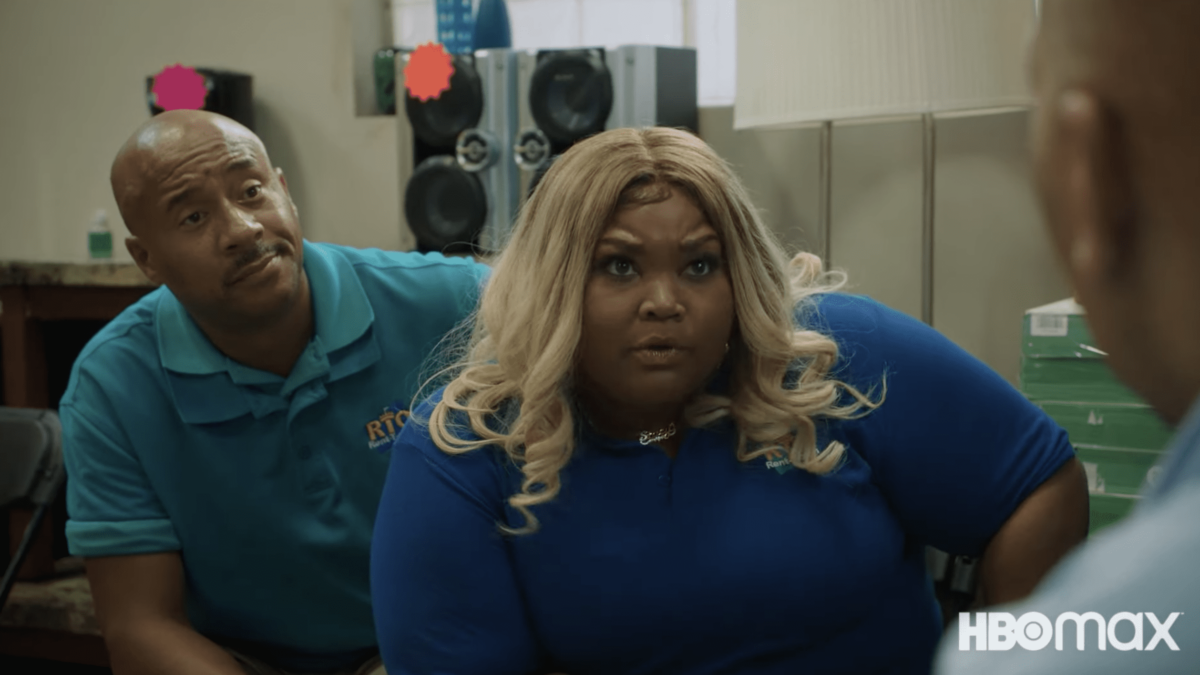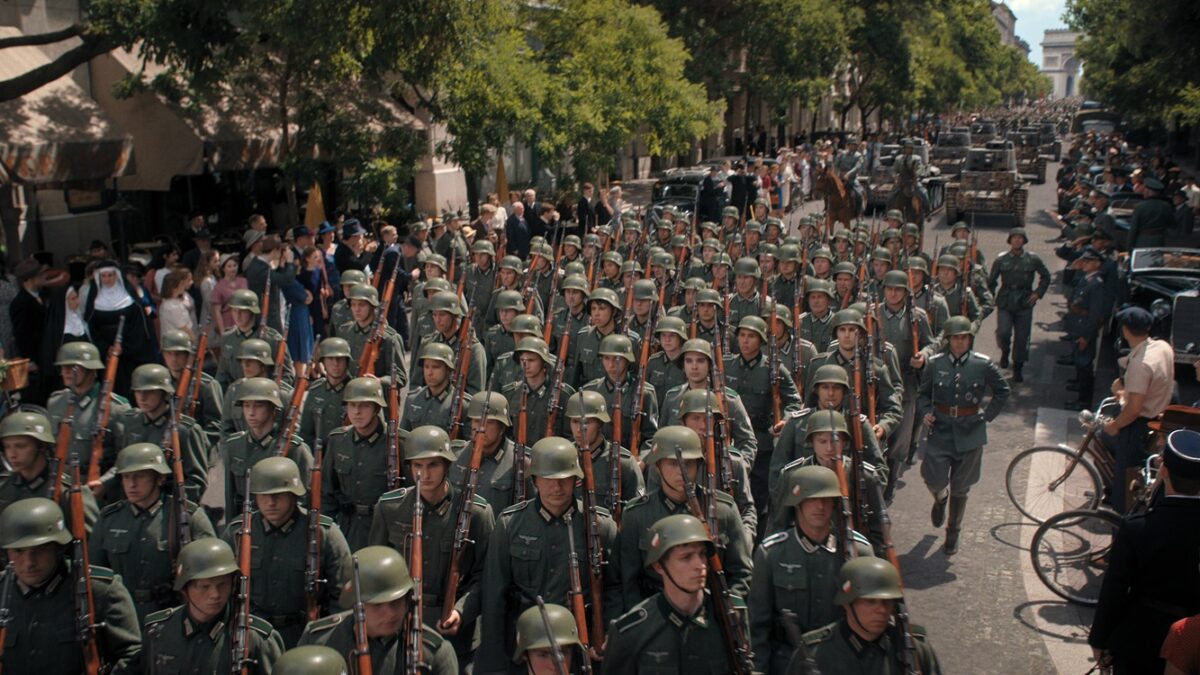There have been a lot of TV shows set in Chicago. Maybe its big-shoulders reputation, mixed in with the cultural panache that earns it the title of Capital of the Midwest, makes it alluring to Hollywood writers. Not many shows get it right, though.
Certainly not “Joanie Loves Chachi,” maybe a near miss for “The Bob Newhart Show,” and let’s call it almost there for that recent critics’ darling, the au jus-spattered, frenetic, and heartfelt “The Bear.” Even that last one, though, doesn’t feel homegrown. The shots show us this neighborhood or that, maybe the Tribune Tower here, the Sears Tower there, but it lacks a sense of place. If it weren’t about an Italian beef joint, it could be anywhere. You can tell it was made by a suburbanite, not a real Chicagoan.
For this expat West-sider, it’s clear that HBO’s comedy “South Side,” is by South-siders, about South-siders, and for — well, anybody who likes a joint that’s hilarious, self-aware but not self-conscious, topical without being preachy, and as grounded in a real place as ever a show I’ve seen. Even better is the unstated undercurrent that the place’s potential was ground down under statist central planning decades ago and has yet to recover.
“South Side,” which just wrapped its third season, exemplifies that Chicago is all about the hustle. It doesn’t matter if you’re a cop wearing braids, a lazy repo man, a guy selling sno-cones on the corner, or an alderman in suits just a little too shiny to be tasteful. It’s Chicago, and you do what you gotta do. You can’t expect anybody to help unless they get something back.
The two repo man main characters, the studiously unglamorous Simon James (Sultan Salahuddin) and Kareme Odom (Kareme Young), made their way through community college only to have to scrape by taking every piece of furniture from a family’s home. And when that family didn’t keep up on the payments to Kareme’s brother, Quincy (Quincy Young, his real-life twin), of course they’re going to get up to some nonsense like selling black-market Viagra just to get a little more ahead. And it’s damned funny when things don’t work out for them, like they never do.
“South Side” is the brainchild of Bashir Salahuddin, who plays the hapless Officer Goodnight, and his Harvard theater pal Diallo Riddle. A native of the South Side, Salahuddin keeps the show in the family: his wife, Chandra Russell, stars as the capricious Sgt. Turner, who’d much rather be going to Lollapalooza than tracking down a killer; his brother, Sultan, is our sorta-hero, Simon; and their sister, Zuri, plays another, probably smarter, employee at the Rent-T-Own store.
When Sultan Salahuddin’s official Comedy Central bio notes that he spent his childhood “buying Now and Laters from the candy lady,” you believe it. Didn’t we all do the same? When the sno-cone man says, “We finna make this happen,” get that mix of syrups just right, this is someone talking real, even if it’s scripted. These people know Chicago.
And they know Chicago is a damned hard place. “Yes, our neighborhoods have challenges, but we also have a lot of hope and love. And importantly, we love to laugh.” So Bashir Salahuddin and Diallo Riddle told The Root back in the show’s first season.
Yes, Chicago’s neighborhoods have challenges, its black neighborhoods almost uniquely so. It’s for a simple reason: City hall didn’t like that all of these black folks were coming up in the Great Migration. They weren’t only black, but they had the audacity to create thriving neighborhoods, right up against the borders of such sacred white Democratic enclaves as the Bridgeport of Mayors Kelly, Kennelly, and (eventually) R. J. Daley himself. Their response was the evil but cleverly named strategy of slum clearance, or its twin, “urban renewal.”
Starting in the late 1940s, exercising the powers of eminent domain granted it by state law, the city of Chicago razed black communities, dropped down the Dan Ryan Expressway to keep the blacks away from the white enclaves, and shunted the former residents of those neighborhoods into the open arms of the Chicago Housing Authority and the finest high-rise projects it could offer. In short, the city of Chicago, as an institution, saw black people doing well, found them some sort of existential threat, and went about re-enslaving them by doing its best to make them serfs.
Ten years ago, the estimable Kevin D. Williamson wrote a piece for National Review on how the razing of the projects had broken the cohesion of Chicago’s drug-peddling gangs, resulting in a proliferation of violence throughout the city. It’s a good analysis, and is written in Williamson’s best on-the-ground prose, but he doesn’t go back quite as far as he should.
These days, the Englewood neighborhood where “South Side” is set and mostly filmed has a murder rate roughly 15 times higher than the rest of the nation. It’s not the stuff of comedy, even if you’re a Beckett fan. Even still, that’s not the whole story of the place.
Like Salahuddin and Riddle said in their press-junket statement to The Root, “There is joy on the South Side.” But that joy exists almost as an act of defiance: of the city that destroyed the communities that could have fostered the dreams of betterment all of these bumblepreneurs sketch out for themselves every morning; of the people around them who should be helping them get to a better place but don’t, because they’re likewise treading water; of the unacknowledged but ever-present threat of stupid, pointless violence, which maybe you can parody in an episode about a killer iPad-cum-file-cabinet-robot, but you can’t escape.
So what’s to do about the South Side? Williamson advocates for tougher penalties for straw buyers of guns. Chicago Mayor Lori Lightfoot has called for coordinated federal efforts to combat the “illegal scourge of gun violence.” Neither one of them gets to the heart of it the way “South Side” does. It’s about the people. And Salahuddin and Riddle have created, however idealized it may be, a picture of what Chicago needs to do just to get started.
It needs to relax a little, maybe take a sip or a puff, laugh at itself, and start pulling itself up by its own bootstraps, one person at a time but with all of your friends along for the ride, all of you up to your own thing. Just make sure there are plenty of Now and Laters to go around.









